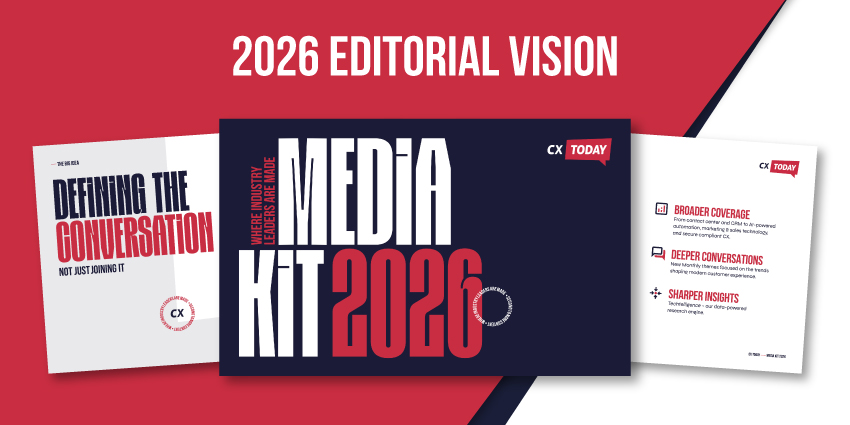Over the past two years, employers have faced a challenging talent market. Many employees, particularly those in the customer service space, have decided that they no longer want to be in their industries. This mass exodus was a wake-up call for organisations, HR departments and company managers need to put their heads together and reconsider their employee experience strategy.
Employee engagement, job satisfaction and employee well-being are not new concepts, yet about 70% of HR leaders fail to understand what employees are missing in the workplace that prevents them from staying in one job long term.
But what if organisations focused on uncovering workplace trends and challenges based on what employees tell them? With voice of the employee (VoE) intelligence, companies can reveal and take action on these insights to boost employee engagement.
Nick Rowe, Customer Success Director at CallMiner, recently weighed in on the topic and what organisations can do to drive more positive employee experiences.
What is going on in the workplace?
To understand why people are leaving or staying in a certain place, it’s essential to understand the main driving forces. This is where VoE insights play a considerable role.
Besides showing employees’ sentiment towards certain aspects of the job, these insights can also explain why employees quit. These include burnout, organisational changes, poor flexibility, discrimination, lack of well-being support, and more.
Thankfully, simple strategies, such as genuinely listening to employees’ needs, have the potential to save time, money and other staffing resources.
According to Rowe, measuring and analysing VoE at scale has the potential to help companies identify gaps in training, determine whether a person’s interests are being fulfilled in their roles, or even highlight whether they would be more successful and productive doing a process-driven job. As it relates to contact centres or customer service centres, Rowe says:
“By capturing and analysing conversations that happen between customers and employees, organisations can see if the employee is capable of building a bond with the caller or if, in some instances, this is consistently resulting in too much chit-chat causing longer call durations.”
“Supervisors and coaches can take a holistic view of a call from the perspective of the caller and the agent. In the same way that agents have to show empathy with callers, Team Leaders should show empathy with the difficulties that agents encounter and give advice such as providing de-escalation techniques when dealing with irate callers.”
Successfully implementing a VoE programme requires a modern data-driven approach in the workplace which enables companies to:
- Leverage feedback to improve the employee experience
- Give employees direction for self-improvement and development
- Increase retention and improve onboarding for new employees
The key to great retention
As it turns out, what employees want in their workplaces is actually fairly basic. Proper tools, a respectful environment, data-driven feedback and adequate management.
Further, suppose emotional needs aren’t met, which are just as important as the right tools and feedback. In that case, employees can have a hard time seeing themselves in the company’s future or where they fit into driving value and making an impact. If these feelings persist, employees are more likely to disengage and leave.
“Fostering a healthy and collaborative workplace does not need to be complicated. It starts with listening to employees.
For example, let’s consider how organisations can better support struggling employees. Understanding where they’re struggling, suggesting areas in which they can improve, and showing how they’ve progressed over time – all without them telling you they need more support – is a great motivator and boosts engagement for employees, as well as their relationships between their managers and teams.
On the flip side, managers can often take top-performing employees for granted without complimenting or rewarding them as much as they should. It links back to listening and paying attention to what employees are doing right and sharing those best practices with the wider team, which helps employees feel valued and appreciated.
Rowe elaborates on this topic, saying: “What really makes a difference is employing positive language. Supervisors and coaches should try to give praise as often as possible, giving recognition to both areas of improvement and good performance.
“Leaving your agents to simply get on with it isn’t acceptable in this day and age. You need to be showing clear interest and support for what they’re doing.”
Finally, companies should not forget about the employee data that holds actionable insights. By employing conversation intelligence tools that can analyse 100% of employee data, companies can identify key trends in the workplace and tweak their employee experience strategy to benefit the business.
From customer-employee interactions across different channels and departments to employee feedback surveys, data can fuel employee engagement, improve training and more to ultimately lead to happier employees. And when employees are happier and more fulfilled, they stay longer and deliver better experiences to your customers.
To learn more about how VoE data can help uncover employee and workplace trends, how these insights can lead to better employee engagement and satisfaction, and how it impacts business performance, read CallMiner’s whitepaper, “From Great Resignation to Great Retention: Improving Employee Experience.”







